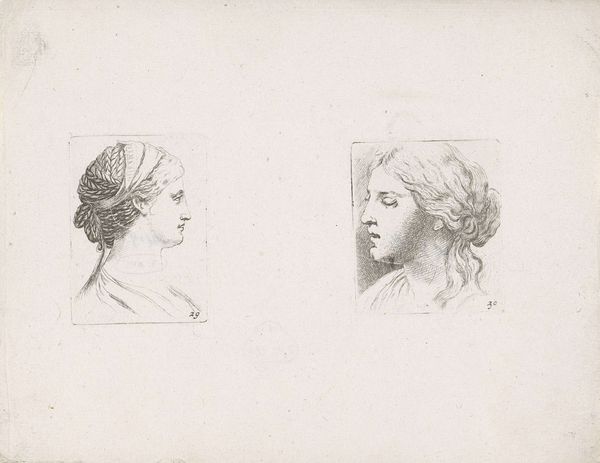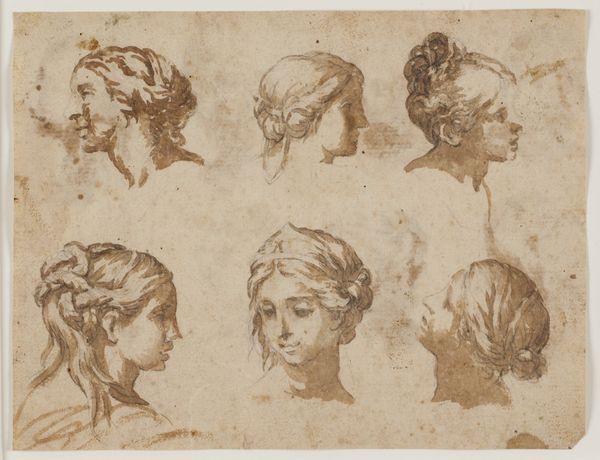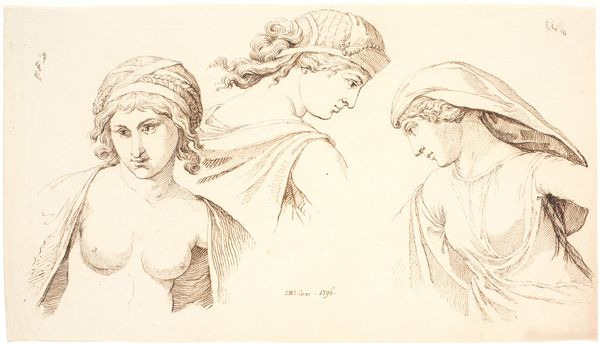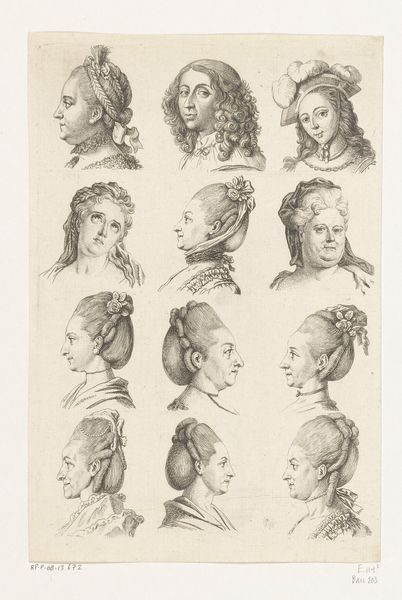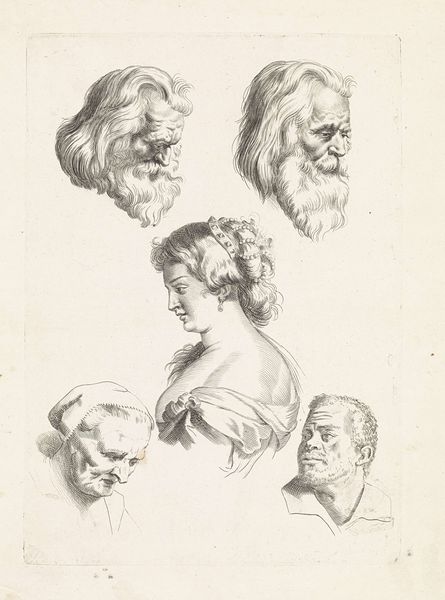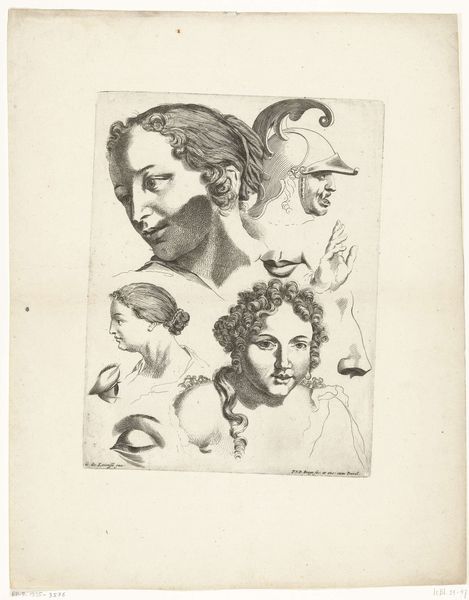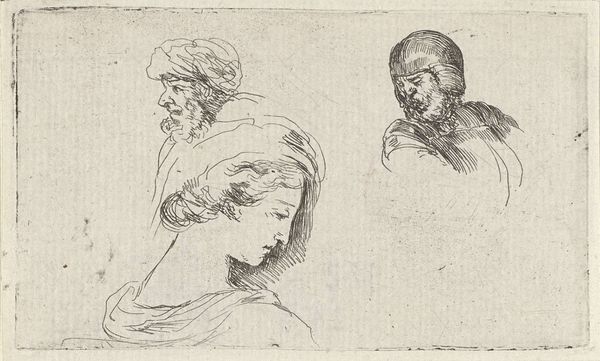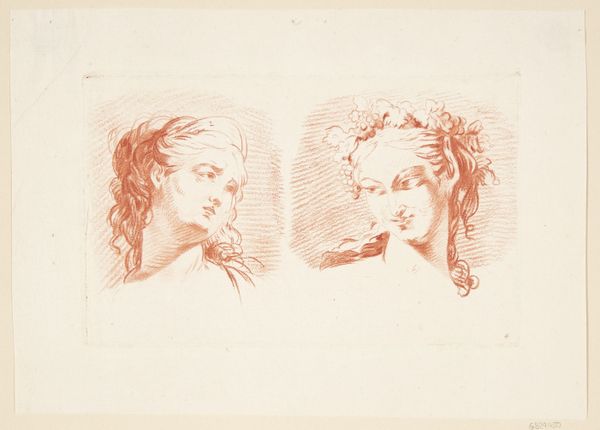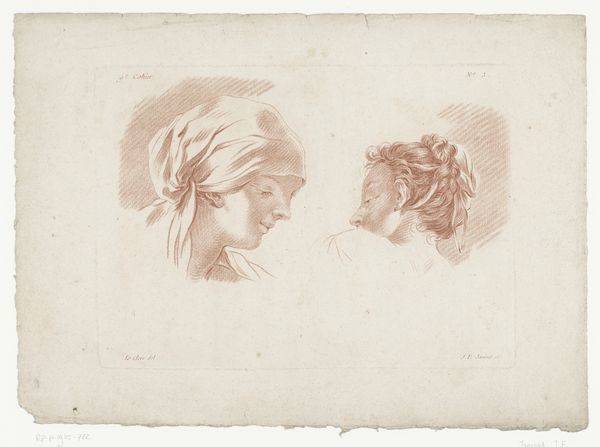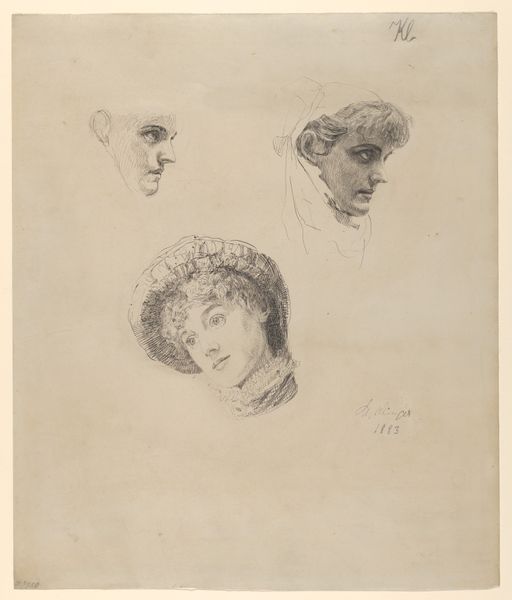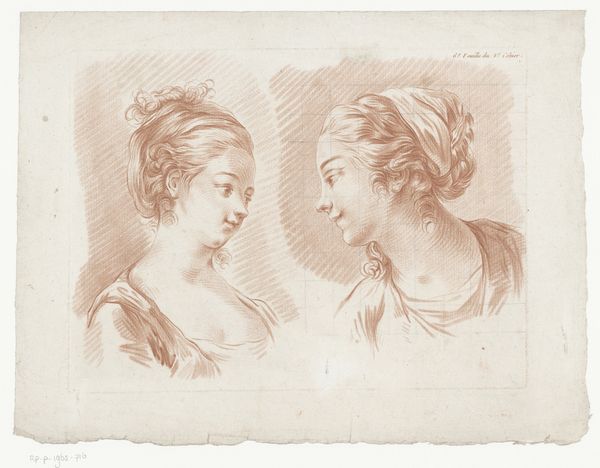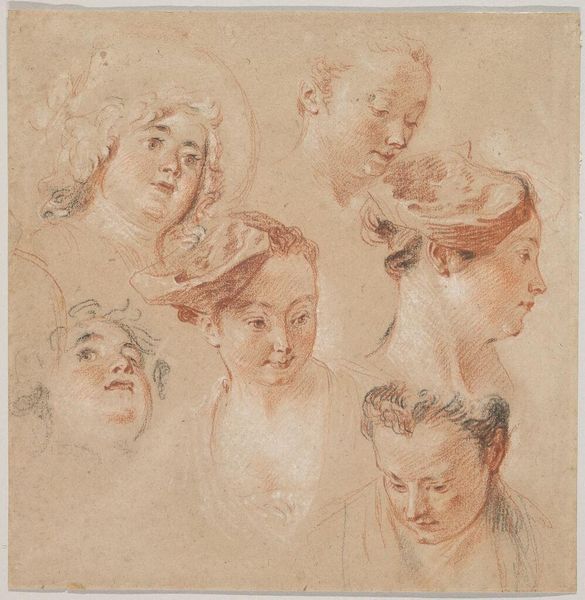
#
amateur sketch
#
imaginative character sketch
#
light pencil work
#
quirky sketch
#
pencil sketch
#
personal sketchbook
#
idea generation sketch
#
pencil drawing
#
sketchbook drawing
#
pencil work
Dimensions: height 149 mm, width 105 mm
Copyright: Rijks Museum: Open Domain
Curator: I'm drawn to the interplay of light and shadow here; it feels very immediate and intimate. Editor: Agreed. You’re looking at “Five Female Study Heads” created around 1670 by Gerard de Lairesse. This captivating drawing on paper now resides at the Rijksmuseum. Curator: Immediately I sense a Renaissance mood, these heads echo classical sculpture, or perhaps antique cameos… there’s something enduring and eternal being conjured. The details of hair and fabric—they point toward something beyond a simple portrait. Editor: It's interesting that you see an echo of eternity, given the artistic context of the period, because while de Lairesse certainly evokes classical ideals of beauty, as you point out, it’s crucial to view these representations within a very patriarchal framework. Curator: True, it begs the question: are these women being celebrated, or are they idealized objects of the male gaze, transformed into allegorical ciphers? Editor: Precisely. We can appreciate Lairesse's talent for rendering form while also acknowledging how art in the 17th century reinforced prevailing gender roles. These studies become a complex reflection on visibility and agency. Note how some heads are more shadowed than others. Do these various chiaroscuro arrangements further amplify a racialized and gendered power dynamic? Curator: That dark central head – there’s an element of mystery there… almost melancholic…while the others seem brightly lit. I wonder what specific iconographic sources Lairesse might have used for inspiration… Editor: Indeed, such visual languages also dictated the expectations and perceived worth of women in society, an echo which then reverberates across centuries. These images, therefore, provide valuable insights, not just into artistic techniques but into cultural codes. Curator: Ultimately this sketch gives us so much more to contemplate than technique—it provides us with a doorway into societal and individual narratives embedded within these faces. Editor: Agreed. By considering the broader historical and social context, we are invited to question the power structures embedded within seemingly benign portrayals of feminine forms.
Comments
No comments
Be the first to comment and join the conversation on the ultimate creative platform.
